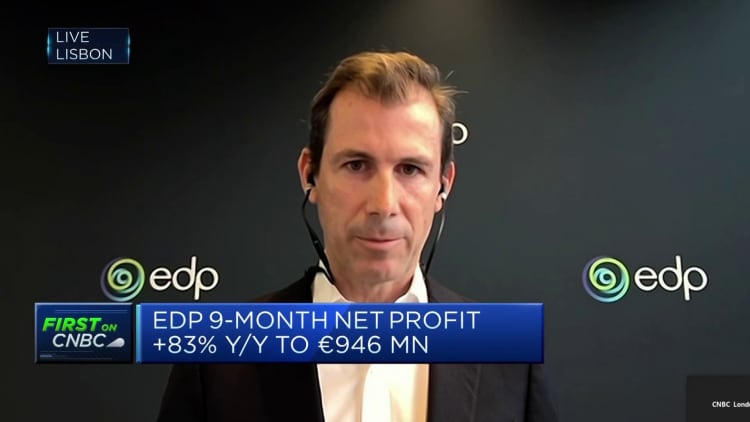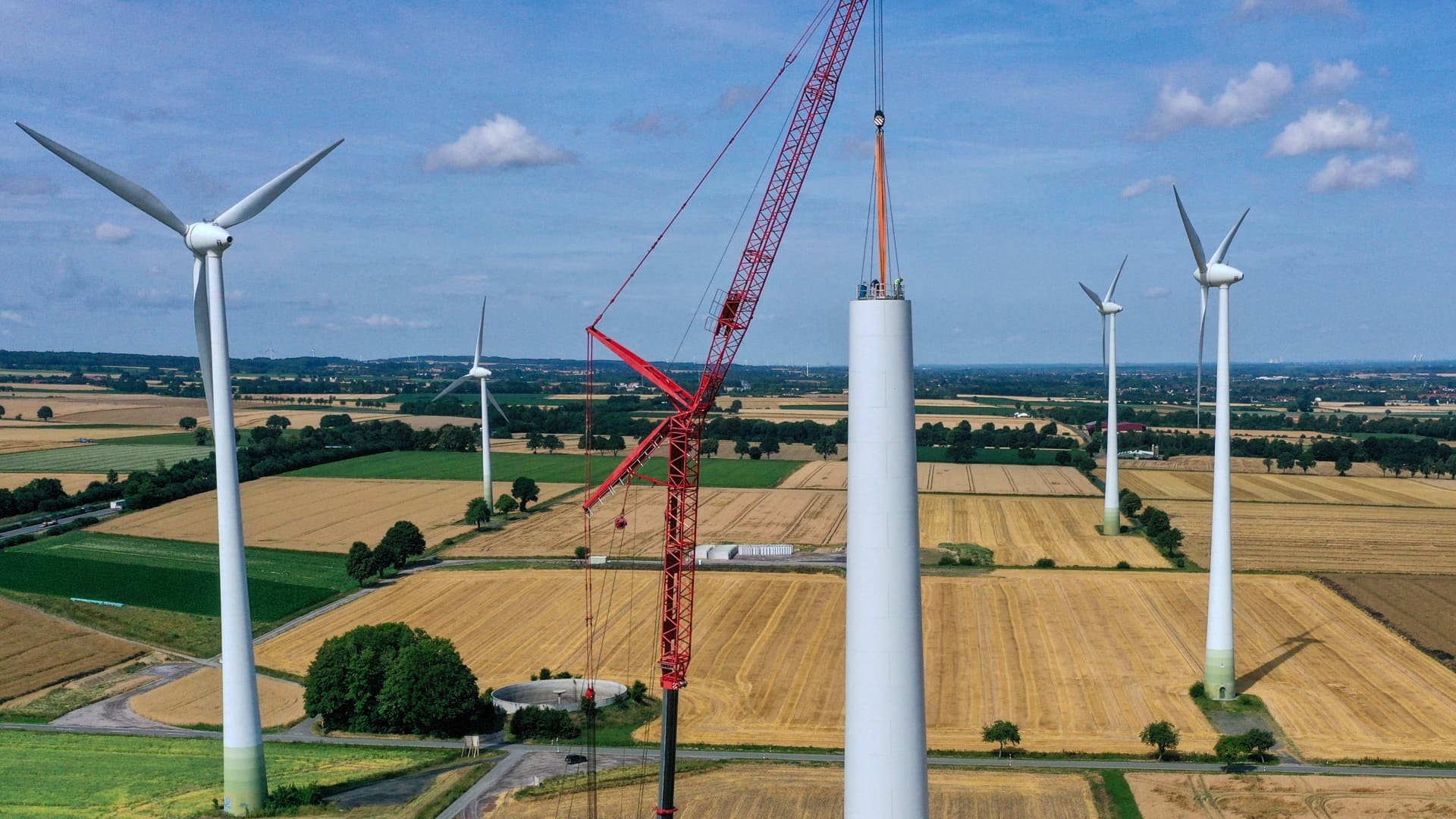A wind turbine installation taking place in Germany on July 14, 2023. The International Energy Agency is calling for a surge in renewable energy installations over the next few years.
Ina Fassbender | AFP | Getty Images
Renewable energy firms are mostly suffering a dire earnings season as struggling supply chains, manufacturing faults and rising production costs eat into profits.
With the world trying to transition at pace toward cleaner energy, equipment manufacturers are struggling to keep up with soaring global demand, leading to rising production costs and questions over the economic sustainability of large-scale projects from the industry’s major players.
Manufacturing faults, most notably at Siemens Energy‘s wind turbine subsidiary Siemens Gamesa, have emerged as companies race to build turbines at a greater pace and scale.
The problems at Gamesa led Siemens Energy to scrap its profit forecast earlier this year, and last month the company sought guarantees of up to 15 billion euros ($16 billion) from the German government.
Specialist wind energy firms are also often finding themselves outbid for seabed licenses by traditional oil and gas players. Should they win a contract, electricity prices are often too low to justify the manufacturing costs, leaving companies looking to their governments in Europe and the U.S. to deliver greater subsidies and restore balance to the market.
As a result, most wind energy stocks are down sharply since the turn of the year.
In a report published last week, Allianz Research noted that the eight largest renewable energy firms in the world reported a combined total $3 billion decrease in assets in the first half of the year, with wind projects in particular facing turbulent conditions. The firm’s economists said the past earnings season was a “learning moment” for the industry.

“The whole sector is grappling with rising construction and financing costs, quality-control problems and supply-chain issues. Inflation and global energy-price fluctuations have also led to increased costs for wind-power projects, casting doubt over the feasibility of many ventures,” Allianz Research economists said.
“Some projects in the U.S. but also in the U.K. are at risk of being abandoned if governments do not offer support. As these projects were initiated before the energy crisis, with guaranteed feed-in-tariffs that were low, they are now becoming more and more unprofitable.”
Although balance sheets remain solid, renewables companies have been writing down assets and cutting their earnings outlooks. Danish company Ørsted announced last week that it was scrapping the development of two offshore projects in the U.S., with related impairments totaling $5.6 billion.
However, compatriot Vestas offered a ray of hope. The company posted a third-quarter EBIT (earnings before interest and tax) before special items of 70 million euros ($74.73 million), well above the 31 million euros projected in a company-compiled consensus. However, it also warned that external factors clouded its near-term outlook, pulling back its full-year investment and margin guidance.

Its CEO Henrik Andersen told CNBC Wednesday that the sector was at an inflection point and that the market would eventually identify its “winners and losers” over time.
“We are very disciplined, we work with our customers and partners can rely on us, and governments can rely on us. That, I hope, creates the strong foundation for being one of the winners in the industry,” Andersen said.
“It’s not broken, but you can’t close your eyes and hope that any project you embark into discussions will always come through if the macroeconomic factors change.”
Political recalibration
Jacob Pedersen, senior analyst at Sydbank, agreed that Vestas in particular was well-positioned to move forward, but that both companies and policymakers needed to rethink their strategies if the transition to net zero was to be realistic.
“We know a huge part of the problem is related to the projects that were won back in 2019/20 and at low prices. Since then, inflation and interests have gone up, it’s become much more expensive to realize these projects, and that has left an order book of deficits, and that order book is now being smaller and smaller as time goes by,” Pedersen told CNBC’s “Street Signs Europe” on Wednesday.
Pedersen added that there is a “huge need for recalibration of the political vie” on the cost of the planned energy transition, given that wind turbines have increased in price by on average 20-30% since 2020.

“The transition to wind turbines, to a greener energy portfolio around the world is getting more expensive, and as such, I think also we have seen some indications — we know that the U.S. is a huge problem for the offshore industry at the moment because of the rise in interest rates,” Pedersen explained.
“But we have seen the newest projects being awarded on much, much better terms and terms that should be good for companies to generate a profit moving forward.”
The European Commission announced a new Wind Power Action Plan last month, aimed at significantly increasing wind installed capacity. Pedersen said this was evidence that the necessary recalibration is underway, but that it would not be achieved overnight.
“This is a process that takes time and in order for project developers to invest in new projects, in order for wind turbine producers to invest in the needed capacity to get us to where the politicians have their goals, much more is needed, and these companies simply haven’t got the cash to invest as much as is needed at the moment,” he said.

